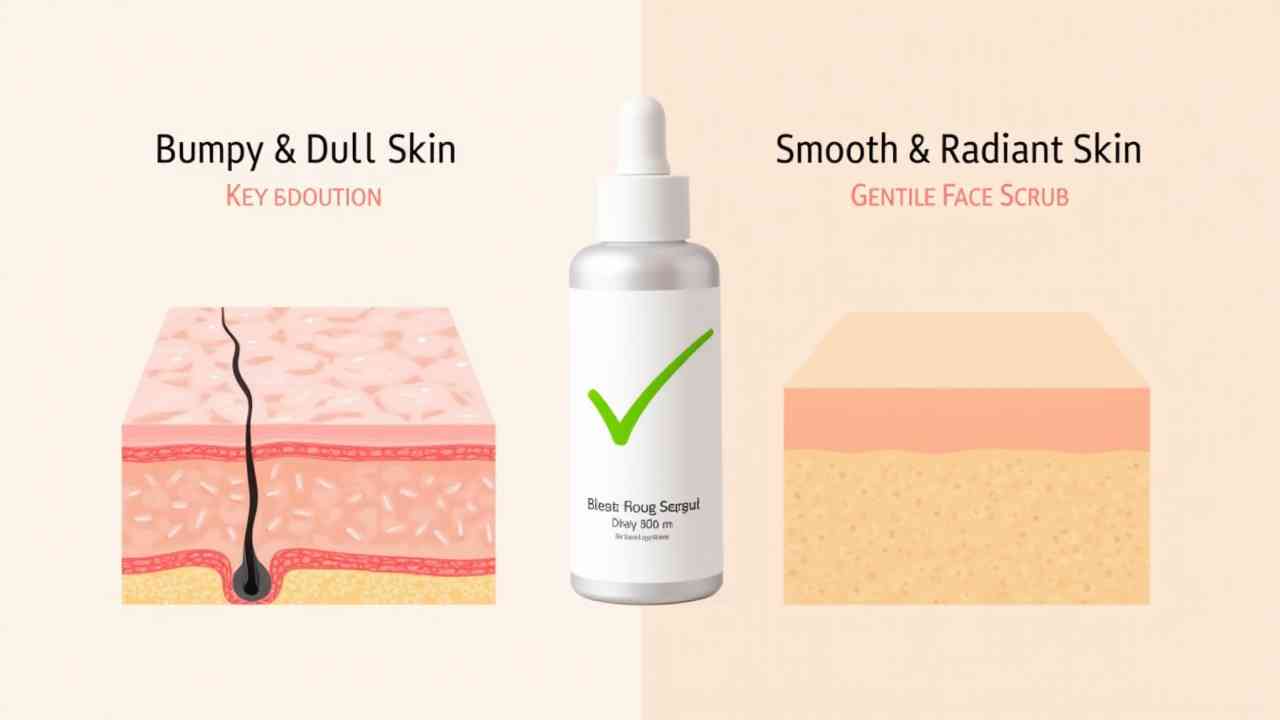
✨ How to Exfoliate for Smoother Skin (A Dermatologist's Guide)
✨ A Dermatologist's Guide: How to Exfoliate for Smoother Skin ✨
The quest for a smooth, glass-like complexion is a top skincare goal. If you're struggling with bumpy texture, rough patches, or a dull look, the answer is almost always a lack of proper exfoliation. But how do you exfoliate for smoother skin the right way? It's not about harsh scrubbing.
The main cause of uneven texture is the buildup of dead skin cells. This layer blocks light and clogs pores. Exfoliation is the process of removing this layer, revealing the fresh, smooth skin underneath. This guide will show you how to do it safely and effectively. ✅
🤔 What Are the Two Types of Exfoliation?
The most important thing to know is that there are two main ways to exfoliate. The method you choose is the key to getting smooth skin without irritation.
1. What is Physical Exfoliation?
This is the classic method. It uses friction to manually scrub away dead cells. This includes:
- Face scrubs
- Washcloths or muslin cloths
- Cleansing brushes
The Problem: It's very easy to be too aggressive with scrubs and brushes. Harsh particles (like crushed pits) can cause microscopic tears in the skin, leading to irritation and a damaged skin barrier. If you use a physical exfoliant, be very gentle.
2. What is Chemical Exfoliation? (The #1 Choice for Smoothness)
This is the method most dermatologists recommend for the face. It is often gentler and more effective than scrubbing. It uses gentle acids to dissolve the "glue" that holds dead skin cells together, allowing them to wash away. No harsh scrubbing needed. The main types are:
- AHAs (Alpha-Hydroxy Acids): Look for glycolic acid and lactic acid. They are fantastic for smoothing surface texture, fading dark spots, and boosting your skin's natural glow.
- BHAs (Beta-Hydroxy Acids): The most common BHA is salicylic acid. It is oil-soluble, so it's a hero for getting deep into pores to clear out clogs and small bumps.
- The Golden Rules: How to Exfoliate Safely
To get all the benefits of exfoliation without the downsides, you must follow a few simple rules. This is how to exfoliate for smoother skin without causing damage.
1. Start Low and Slow: Do not start with a high-strength acid or scrub every day. Begin by using your exfoliant just 2-3 times per week, at night, to see how your skin tolerates it.
2. Don't Over-Exfoliate: More is not better. Over-exfoliation will damage your skin barrier, leading to redness, stinging, and irritation. Listen to your skin and take a break if it feels sensitive.
3. Moisturize After: Exfoliation can be drying. Always follow up with a simple, hydrating moisturizer to support your skin barrier.
☀️ What is the Most Important Rule of All?
This is the non-negotiable rule. Exfoliating acids (and even scrubs) make your skin more vulnerable and sensitive to the sun. All your hard work to get smooth skin will be undone by sun damage if you do not protect it.
You MUST wear a broad-spectrum sunscreen with at least SPF 30 every single morning. This is the most critical step in any exfoliating routine. The cool autumn season is a perfect time to start a new exfoliating routine, as the sun is often less intense, but sunscreen is still a must. ✨